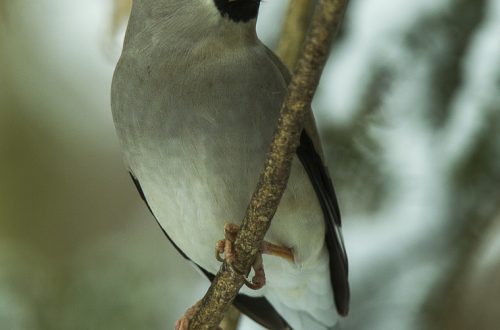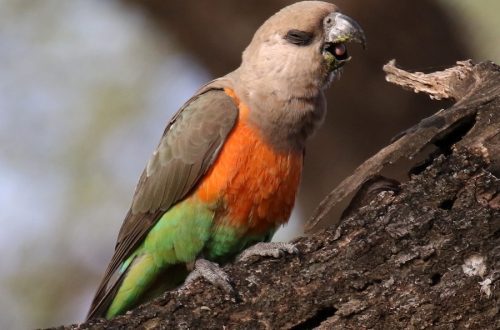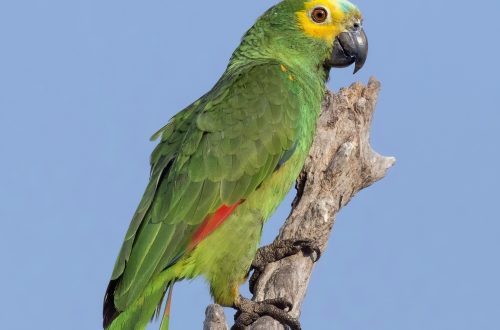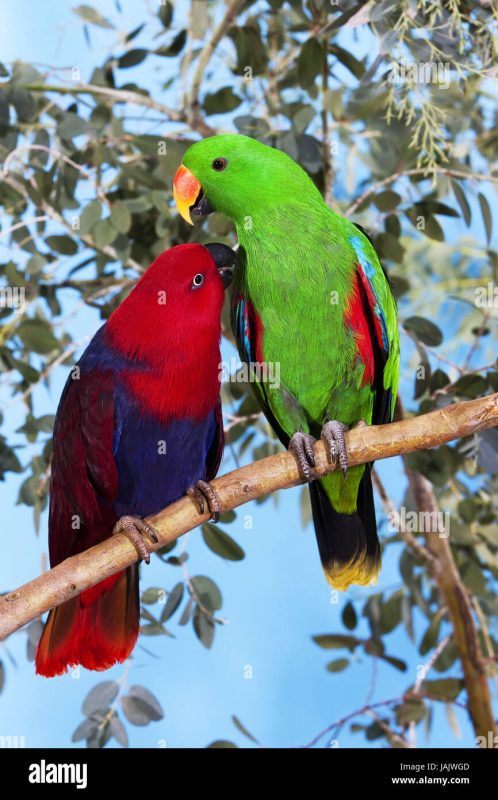
Noble (Eclectus)
Order | Parrots |
family | Parrots |
Race | noble parrots |
View | Noble green-red parrot |
Contents
APPEARANCE
Eclectus body length – from 35 to 40 cm, weight – up to 450 grams. Males and females vary greatly in color.

The main color of males is green, under the wings and on the tops of the wings there is a blue reflection, along the edges of the wings are blue-blue, the sides and underwings are red, the tail coverts are yellow-green. The upper part of the beak is shiny, red, the lower jaw is black, the tip is yellow. Legs are grey. The iris is orange. The main color of the plumage of the female is cherry red. The belly, underside of the breast and the edges of the wings are purple-blue. The red tail is trimmed with a yellow stripe. Underwings and undertail are red. The eyes are surrounded by a blue ring. The iris of the eyes has a yellowish tinge. The beak is black. The legs are bluish. Because of these differences, ornithologists have long believed that females and males belong to different species.
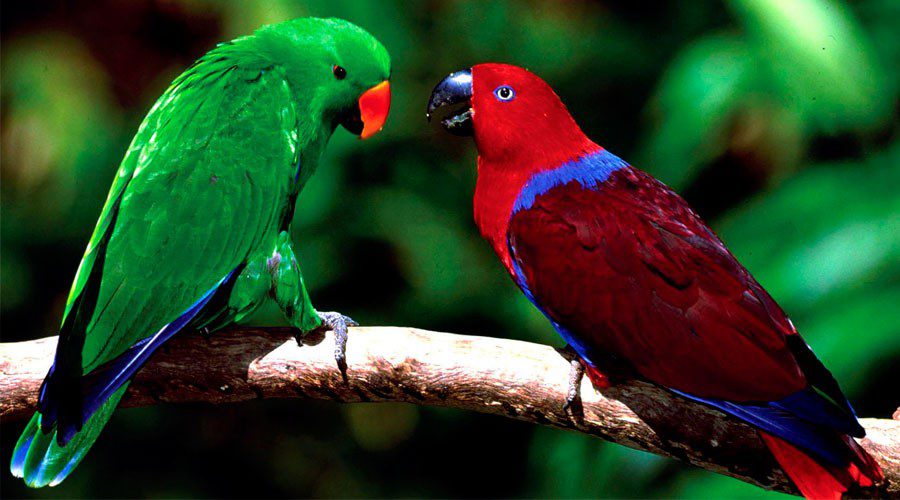
The life expectancy of a noble parrot is up to 50 years.
HABITAT AND LIFE IN NATURE
Eclectus prefer to live in dense tropical forests at an altitude of 600 – 1000 meters above sea level. Usually these birds live alone, but sometimes they form flocks. They feed on nectar, flowers, succulent buds, seeds and fruits. Noble parrots choose hollows of tall trees (20 – 30 meters from the ground) as housing. The breeding female never leaves the vicinity of the nesting tree. And about 1 month before laying, it climbs into the hollow and sits there most of the time. Only the upper part of the body or only the bright red head sticks out. The female lays 2 eggs and incubates them for 26 days. The male spends a lot of time collecting food for his wife, and then for the younger generation. But the male is not allowed into the hollow. The female takes food from him and feeds the chicks herself.
KEEPING IN HOME
Character and temperament
If properly cared for and handled, the Eclectus will become an incredibly open, affectionate, devoted and loving pet. And over time, you will appreciate their intelligence, goodwill and sociability. They are endowed with a calm and balanced character and can just sit on the perch. Unlike macaws or cockatoos, they do not need constant puzzles and games. At the same time, noble parrots are phenomenally smart, you will be amazed at their abilities. For example, they quickly learn a few words and insert them at the right moments. The bird may return fallen food to the feeder or pick up scattered toys.

Eclectus is not a monogamous, so if you get a male and a female and expect marriage from them for life, you may be disappointed. Maybe they don’t like each other at all. Think of pets as just two different birds, and a fair and competent attitude on your part will ensure their peaceful coexistence.
Maintenance and care
Eclectus cannot live without sunlight, space and warmth. The optimum air temperature in the room where they live is +20 degrees. A cramped cage is absolutely not suitable for a noble parrot. If you have a couple of birds, they will like a small aviary (length 2 m, height 2 m, width 90 cm). So that the eclectus do not get bored, change something in the cage every week. Be sure to give your feathered friend the opportunity to fly in a safe room . This is necessary for the bird to develop properly. Clean the drinker and feeder daily. Wash toys and perches as needed. Disinfect the cage weekly, the aviary monthly. The bottom of the cage is cleaned daily, the floor of the enclosure – 2 times a week. Eclectus love to swim, place a bathing suit in the cage or spray your pet from a spray bottle. If you add chamomile solution to the “bath”, the plumage will be more shiny and soft.
Feeding
Eclectus feeding can be tricky. The digestion of these birds is peculiar: their gastrointestinal tract is longer than that of other parrots, so they eat more often.
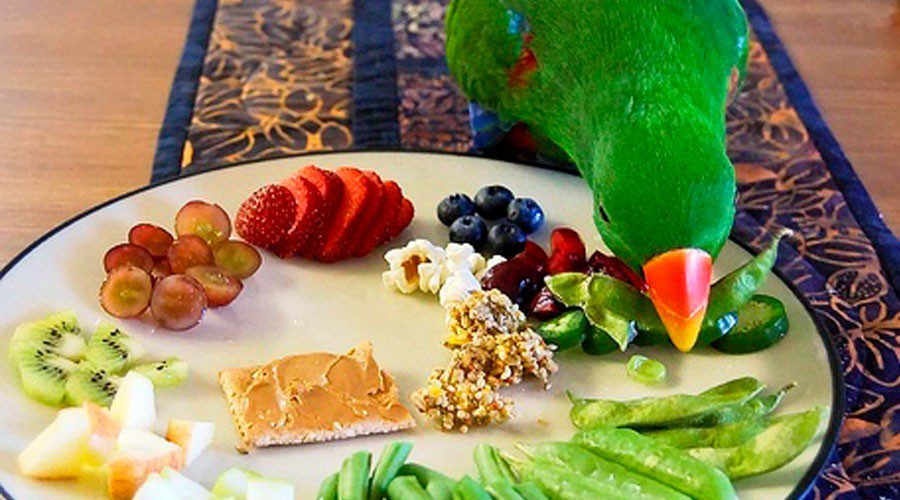
The main food of a noble parrot: fruits and vegetables. The diet of eclectus should contain a lot of fiber, because in the natural environment they eat mainly greens and fresh fruits, and seeds are eaten only when the usual food is not enough. And it is forbidden to give only solid dry food. During adaptation, give the eclectus only soft food: fruits, germinated seeds, boiled rice. Then include in the menu a fresh salad and carrots, peas and corn, boiled beans. You need to gradually accustom to solid food.But never give an avocado!



